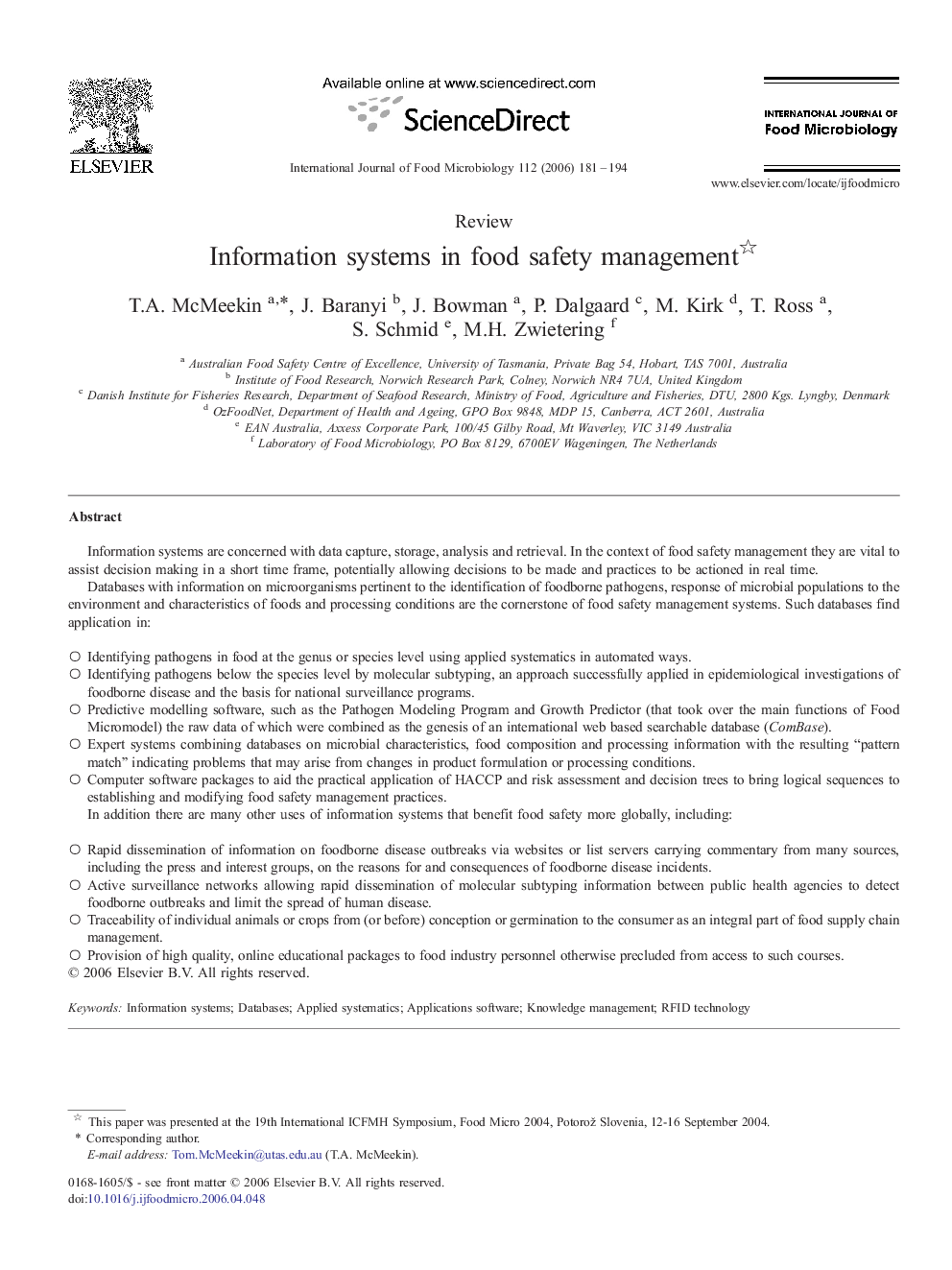| Article ID | Journal | Published Year | Pages | File Type |
|---|---|---|---|---|
| 4369815 | International Journal of Food Microbiology | 2006 | 14 Pages |
Information systems are concerned with data capture, storage, analysis and retrieval. In the context of food safety management they are vital to assist decision making in a short time frame, potentially allowing decisions to be made and practices to be actioned in real time.Databases with information on microorganisms pertinent to the identification of foodborne pathogens, response of microbial populations to the environment and characteristics of foods and processing conditions are the cornerstone of food safety management systems. Such databases find application in:○Identifying pathogens in food at the genus or species level using applied systematics in automated ways.○Identifying pathogens below the species level by molecular subtyping, an approach successfully applied in epidemiological investigations of foodborne disease and the basis for national surveillance programs.○Predictive modelling software, such as the Pathogen Modeling Program and Growth Predictor (that took over the main functions of Food Micromodel) the raw data of which were combined as the genesis of an international web based searchable database (ComBase).○Expert systems combining databases on microbial characteristics, food composition and processing information with the resulting “pattern match” indicating problems that may arise from changes in product formulation or processing conditions.○Computer software packages to aid the practical application of HACCP and risk assessment and decision trees to bring logical sequences to establishing and modifying food safety management practices.In addition there are many other uses of information systems that benefit food safety more globally, including:○Rapid dissemination of information on foodborne disease outbreaks via websites or list servers carrying commentary from many sources, including the press and interest groups, on the reasons for and consequences of foodborne disease incidents.○Active surveillance networks allowing rapid dissemination of molecular subtyping information between public health agencies to detect foodborne outbreaks and limit the spread of human disease.○Traceability of individual animals or crops from (or before) conception or germination to the consumer as an integral part of food supply chain management.○Provision of high quality, online educational packages to food industry personnel otherwise precluded from access to such courses.
